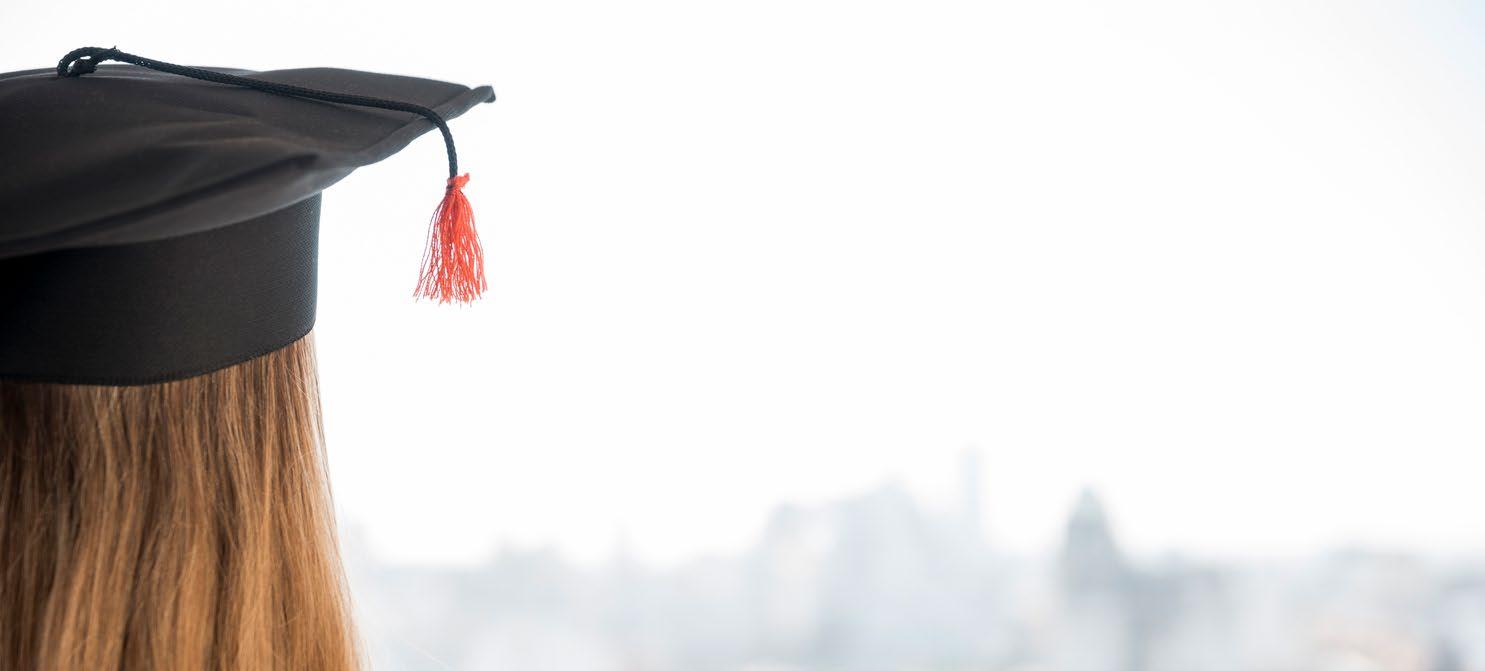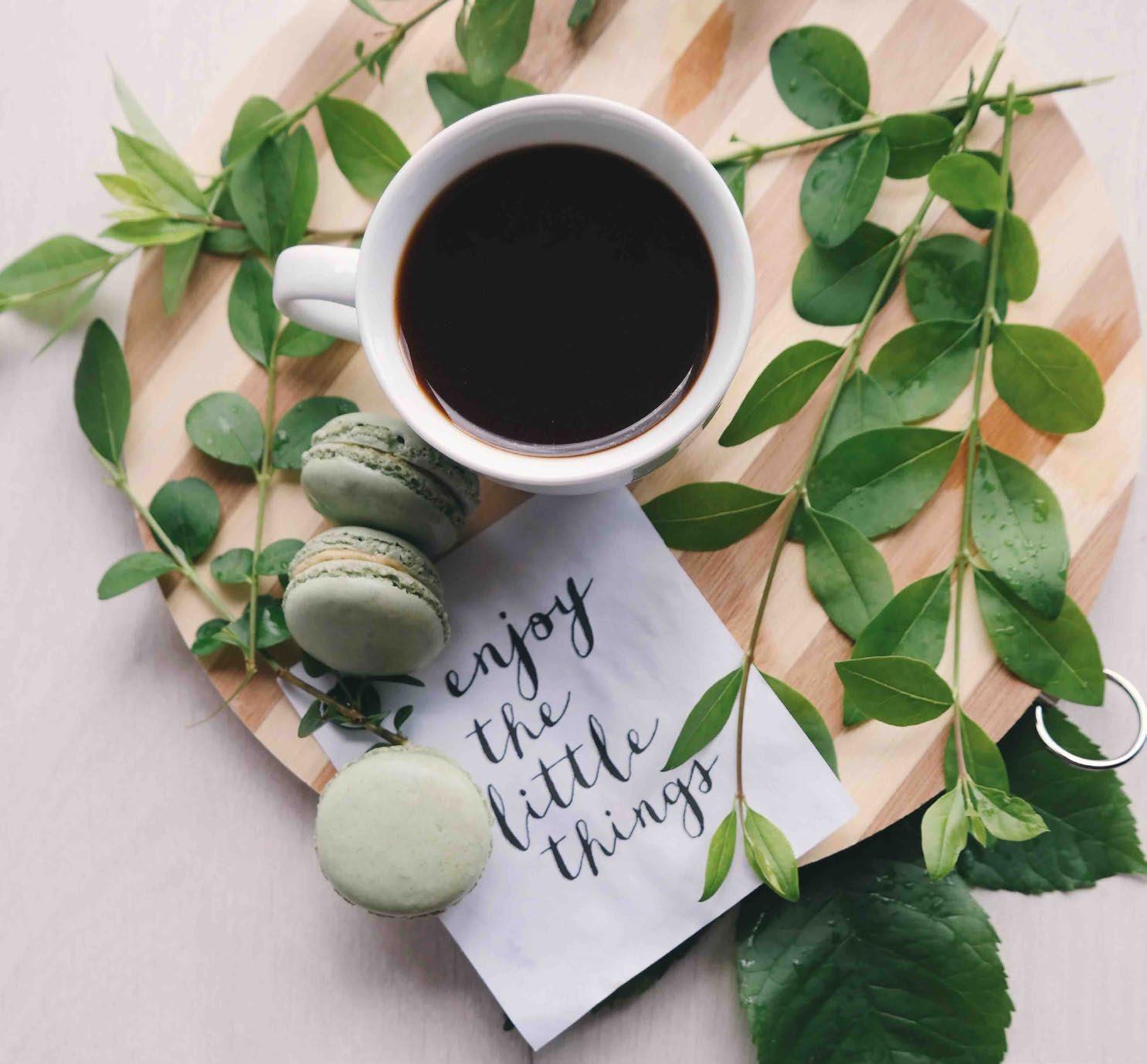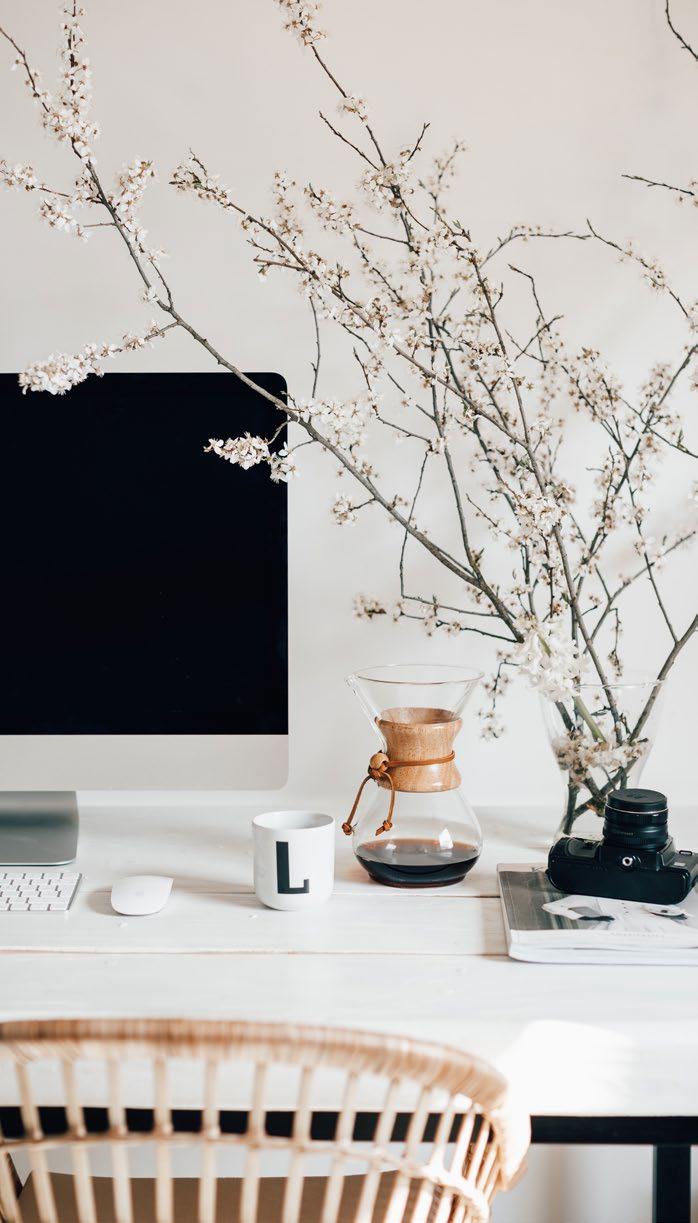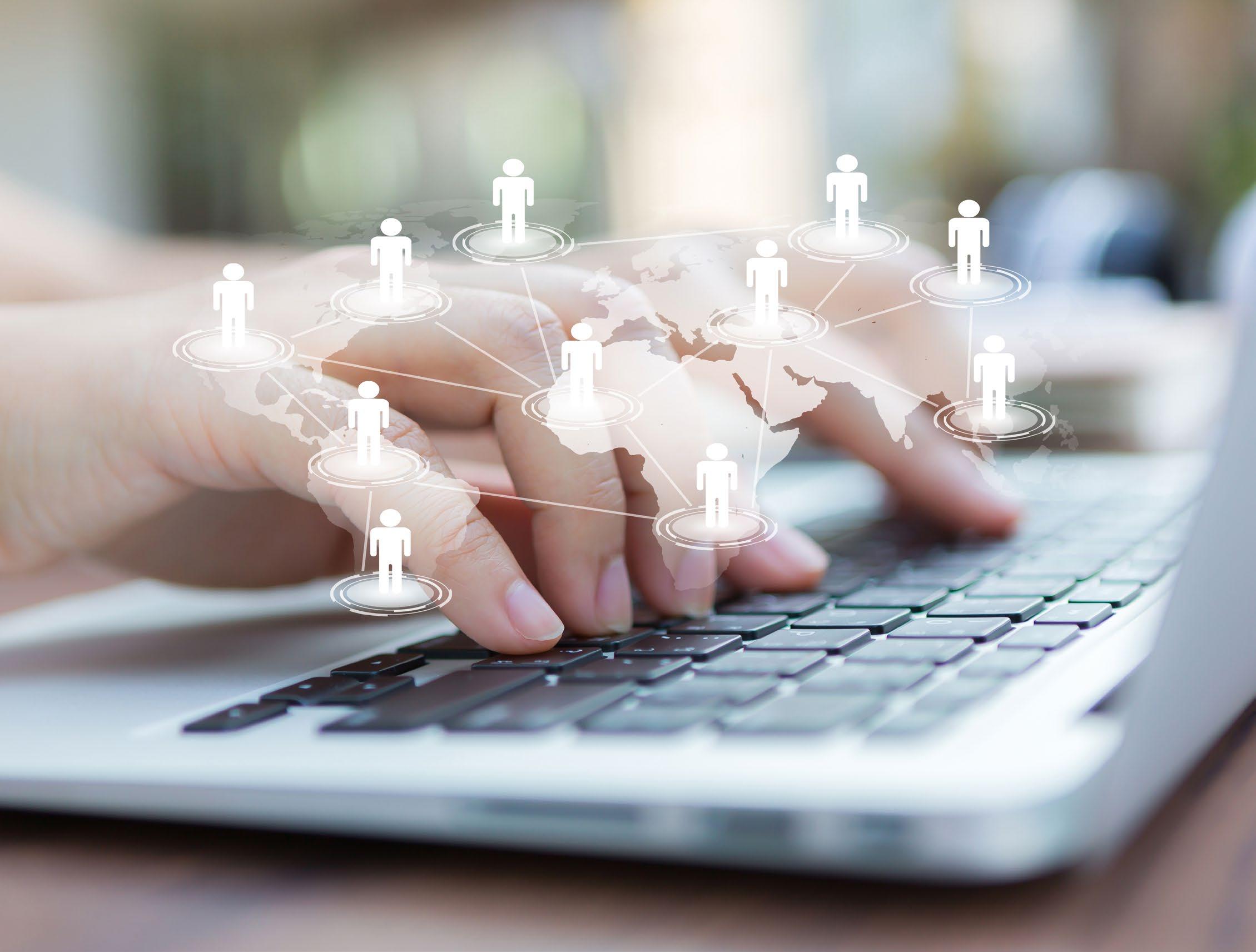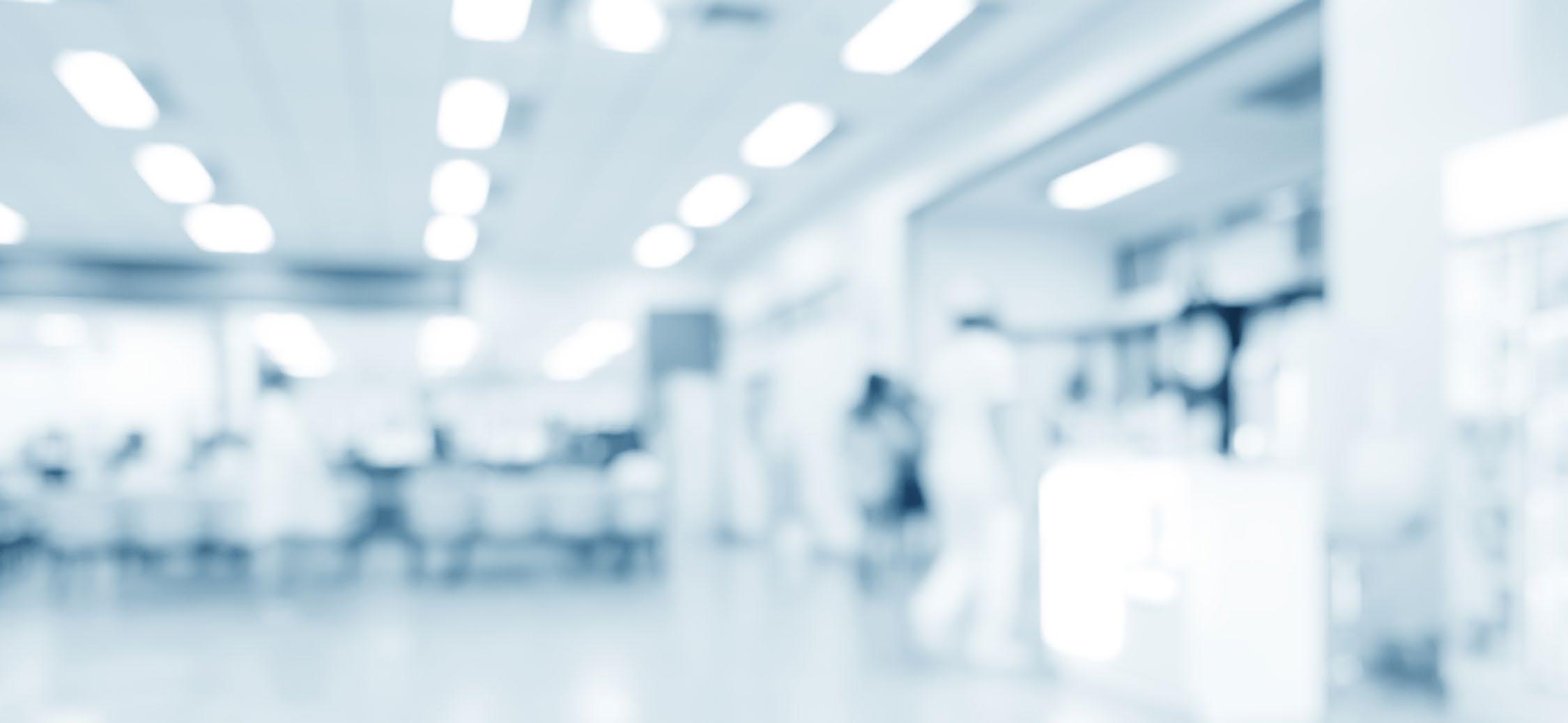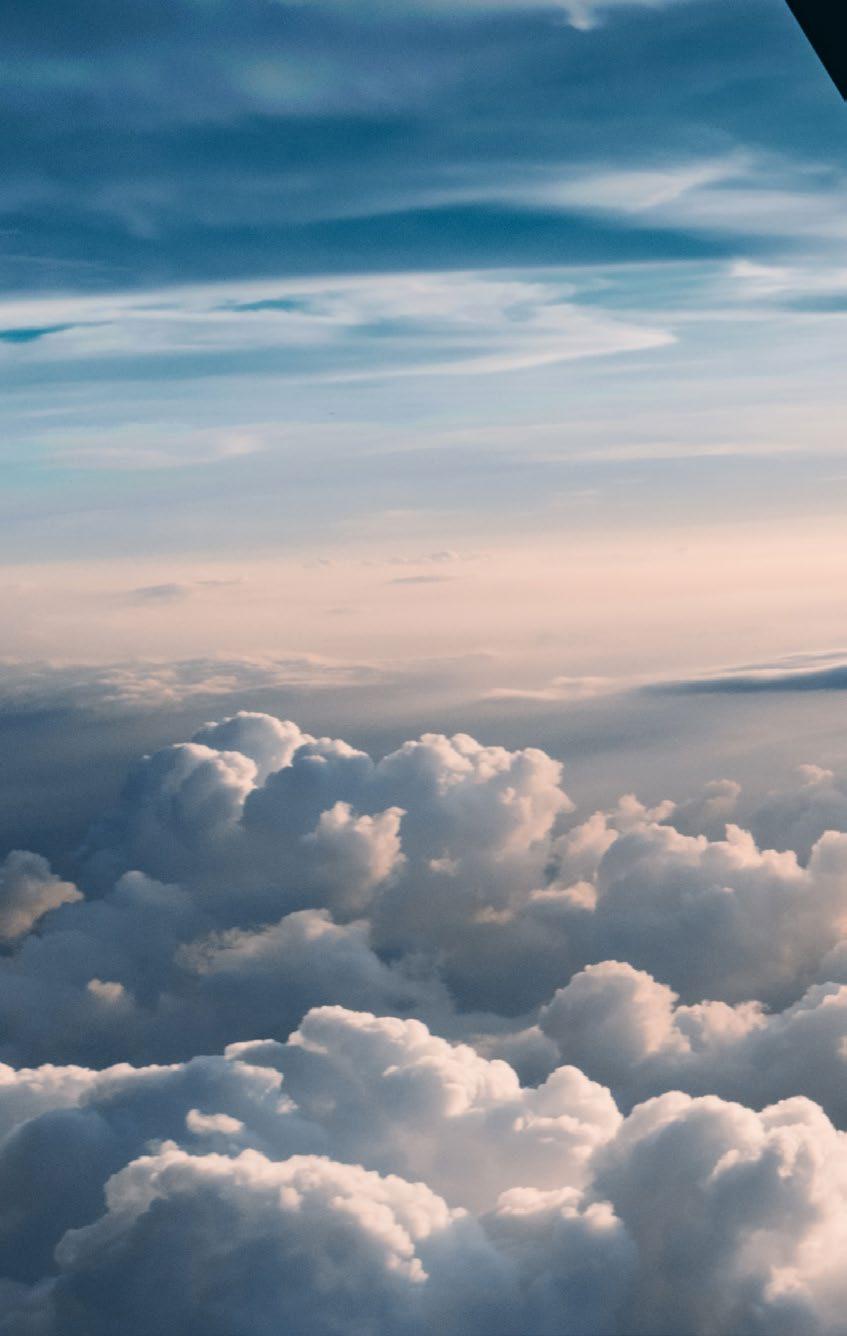
35 minute read
Jenny Sichel
The Birds Still Sing
By Jenny Sichel
Every night for the past two months, I have left my bedroom window open, because every morning the birds sing and remind me that there are still some things which have not changed.
Around me, everything seems to be shifting and mutating. Sometimes it is challenging to grasp a piece of solid ground or a bit of legitimate information. Usually, my ObsessiveCompulsive Disorder takes time to create a chaotic atmosphere of anxiety in my mind that fades into oblivion at my command. However, with the added stresses that are circulating continuously in the world right now, these depressive thoughts, have become more frequent and faster forming. Constantly escalating my anxiety levels are questions like, “Will I ever get to row again with my friends?” or, “Will my parents stay healthy during this outbreak?” The unknowns have manifested themselves in my racing heart and sweaty palms. With the murky fog of depression looming, I, like many of my peers, have had to figure out ways to adjust. For me this involves the realization that, although much of my life is unsettled, many parts of my world are still living and thriving. Spring is here, right on time as per usual. And like clockwork, the birds chirp every morning outside of my window. The rain still feels cold when I go for my walks and my bed still feels cozy and warm every night. Eventually, society will be back to some resemblance of normal and I yearn for that day. But until then, my mind takes solace in the fact that despite so many unknowns and so much change, some of life is still predictable.
As a part of the LINK20 movement, I have seen how sharing one person’s experiences can change another person’s life. This is especially true when it comes to mental health because of the major stigma surrounding it that prevents people from speaking out or seeking help. When I first started talking about my OCD, I was afraid of judgment and worried of rejection, but I ended up receiving support and love. This helped propel me to seek treatment. I am now confident enough to share my experiences with friends, family, and my LINK20 community, with hopes that I can touch another person’s life.
During these challenging times, it is imperative to let each other know that we are not alone. Many people are having a difficult time coping and we need to make sure that we do not push away anyone because of their disability.
If you are worried to talk about your mental health challenges or something you are going through, just know that there are people out there who will 100 percent support you. Speak about it, write about it, draw, paint, express, do whatever you need to stay mentally healthy, but most of all just know that you are not alone.
Jenny Sichel is a 2016 USA Paralympic silver medalist in rowing. When she is not on the water, she works at the Ruderman Family Foundation as the LINK20 Coordinator.
Zoom-ing with a Speech Impairment
By Sarah Kim
“It’d be easier to understand me if we do the interview over video chat due to my speech impairment.” I’ve written a couple of dozen iterations of that sentence in my emails over the past two years.
Ever since I graduated from Columbia University’s journalism school, I’ve been working as a freelance journalist. I’ve been fortunate that a handful of publications accepted my pitches and published my work, with some of them even bringing me on as a permalancer. I have mild cerebral palsy, which affects my speech and mobility. A significant part of a journalist’s job is to interview sources to quote in stories and to gather background information.
It is a tad bit ironic that, as a journalist, verbally communicating is considerably harder for me. I do my best to make the listener’s job as easy as possible. Almost 100 percent of the time, I inform the interviewee of my speech impediment, and that speaking via video chat, instead of over the phone is easier for me; then they can read my lips as I speak. Another perk about videoconference platforms is that they often come with a chat box, so I type out my words in times of severe misunderstanding.
In the days and weeks after most of the U.S. shut down to slow the spread of COVID-19, everything — from school to work to socializing, and even to weddings — has moved online, most notably onto Zoom. People have been on Zoom calls so much that “zoom” has become a regular verb, just like “google.” (Side note: what happened to Skype?)
At first, I let out a sigh of relief. I liked the idea of talking over video chat as the new “norm.” In pre-pandemic times, video calling wasn’t something most people regularly did, so when I’d bring it up as a suggestion, it would feel somewhat awkward. But now that it’s becoming such a common thing, I thought it would become one less hurdle. I wouldn’t need to necessarily “request” a meeting or interview to be over Zoom or Google Hangouts since “meeting” over video chat has become the new default.
However, instead of this new reality moving my life forward, it has, in some ways, moved it backward. Throughout high school and college, participating in a class discussion had been challenging, especially in a large class setting. When professors or classmates didn’t understand me, I would type out my comment or question in a text-to-speech app. This would often create an awkward lag in the natural flow of the overall discussion. The class would have to either wait for me to type my words or continue and come back to me once I had finished typing. When the latter occurred, sometimes the class would’ve proceeded way
ahead with the conversation that my remark would be too late or irrelevant.
Interestingly enough, I’ve seen the same issue occurring on multi-people Zoom calls. Video chat presents its own unique challenges. Coupled with technical issues, such as weak internet connection or microphone feedback, a speech impediment can cause further muffling on the receiving end. As a result, I’m
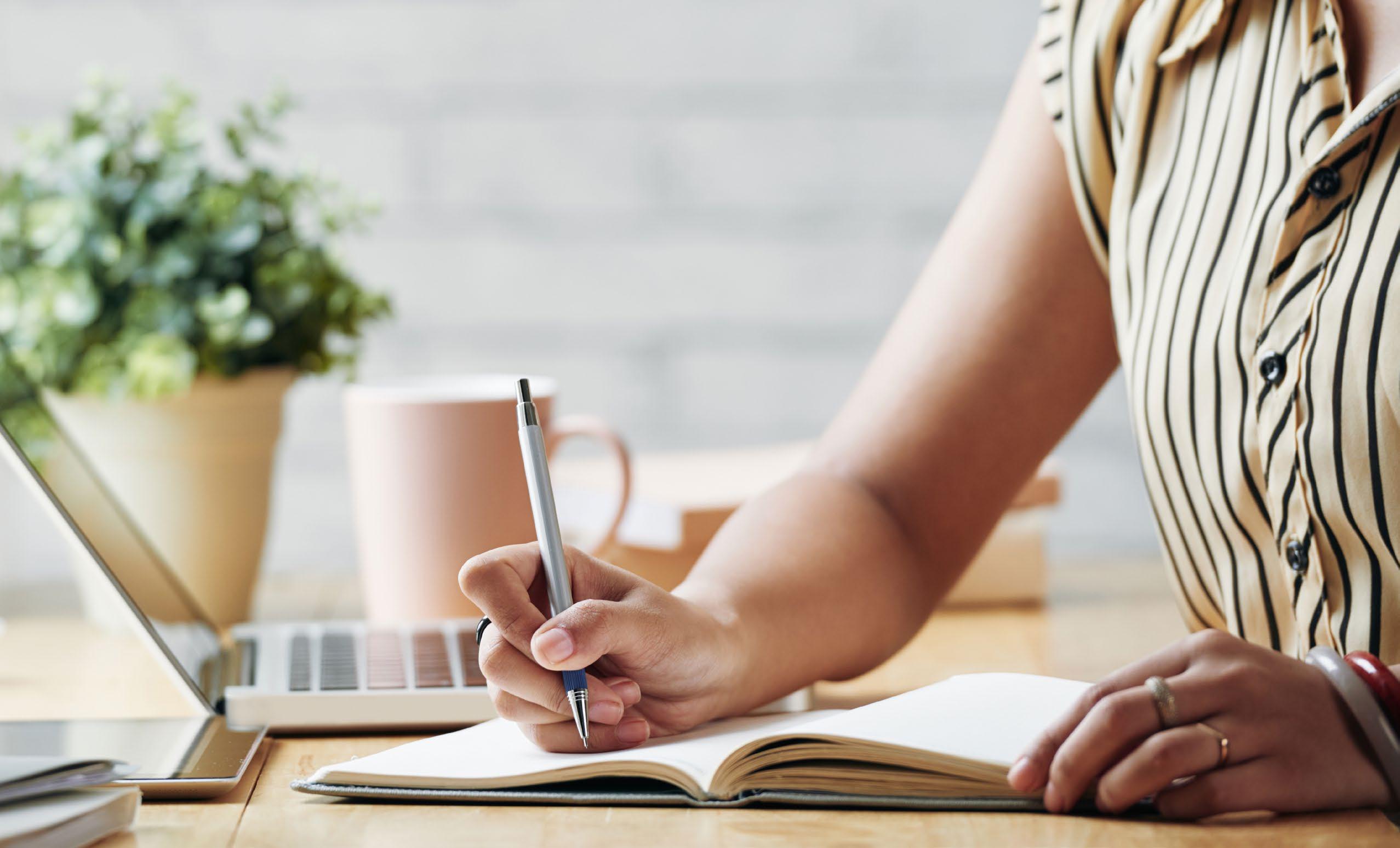
finding myself staying quiet and not actively participating in the calls.
Even with such advances in technology, I — along with other people with disabilities — am experiencing the same issues as I had over a decade ago. The issue of people and technology not understanding my speech patterns goes beyond the confines of video calls. For example, voice assistance devices, such as Siri, Echo, and Google Home, can significantly improve the lives of people with mobility or dexterity difficulties, but not if they also have a speech impairment. As a society, we’ve become gradually more accepting of people with various disabilities. But when it comes to people who speak differently than what’s considered the norm, progress is slow to come.
Sarah Kim is a freelance journalist with cerebral palsy based in Brooklyn, NY. She has written for Forbes, Teen Vogue, Glamour, The Mighty, Columbia Journalism Review, Greatist, and many more.
Making Online Meetings More Accessible
By Russell Lehmann
Due to COVID-19, our world has been turned upside down. Restaurants once full of lively conversation now sit empty and desolate. Schools are vacant, with our educational centers now in the hands of parents and the students themselves. Sporting arenas are dark and silent, a surreal scene for many as sports has historically been our main outlet as a society during times of uncertainty.
Social distancing has become the new normal, and while it is vital that we isolate ourselves physically, it is imperative that we do not do the same emotionally, for the cornerstone of any healthy society is human connection, a need intrinsic to each and every one of us.
While we have all been hit hard during these times, the disability community has been especially affected. The largest minority group in the world once looked to socializing with their peers as a refuge from their daily struggles, and with this less and less possible these days, are now seeing their mental health and wellbeing deteriorate. Much of our emotional needs, as well as our professional obligations, are attempting to be met through online activities such as zoom and webinars. During these strange times, it is now more important than ever to raise awareness about the accessibility of these meetings for individuals with disabilities in order to ensure that no one is left behind as we all attempt to navigate uncharted territory.
As a motivational speaker with a platform of autism and mental health, many of my meetings as of late have been conducted on platforms such as Zoom. From my experiences, I have determined the following ways to promote inclusion and accessibility for those with autism and mental health struggles.
Having autism, I very much appreciate it when agendas and materials are sent out ahead of time, so that I know what to expect during the meeting. Having all informational resources that are dispersed be universally accessible is a must, especially for those with dual diagnoses and multiple disabilities. It is also helpful for all participants that any materials are written succinctly without needless words and/or jargon. Some individuals on the spectrum also benefit from practicing the meeting ahead of time with the host to make sure no question or concern regarding the technicalities of the meeting go unaddressed. During the meetings, it is crucial that each participant limit any background noise to not cause any sensory overload. It is also important to only have one person speak at a time while all others who are listening have their microphones on mute. Features such as “raise hand” or a chat box will help the discussion run smoothly without participants talking over one another. The host or moderator should introduce all participants before the meeting starts and remind them to state their name before speaking. Running the meeting according to the agenda and in an efficient manner lessens the chance of an individual on the spectrum becoming overwhelmed when things do not go according to plan.
For webinars, avoid excess pictures and visual content that distract from the main point of the topic while also using plain language for those with intellectual and/or developmental disabilities. Captioning should be available on all video meetings and webinars in case a participant needs to mute all audio if it becomes too stimulating. Recording presentations and meetings is also imperative for those who need to access the content again in order to process all the information.
As individuals with autism are at a much higher rate of having mental health diagnoses, it is necessary for the host and all participants to be mindful of invisible disabilities. Along with autism I also have diagnoses of bipolar, panic disorder and OCD, to name a few, and these struggles
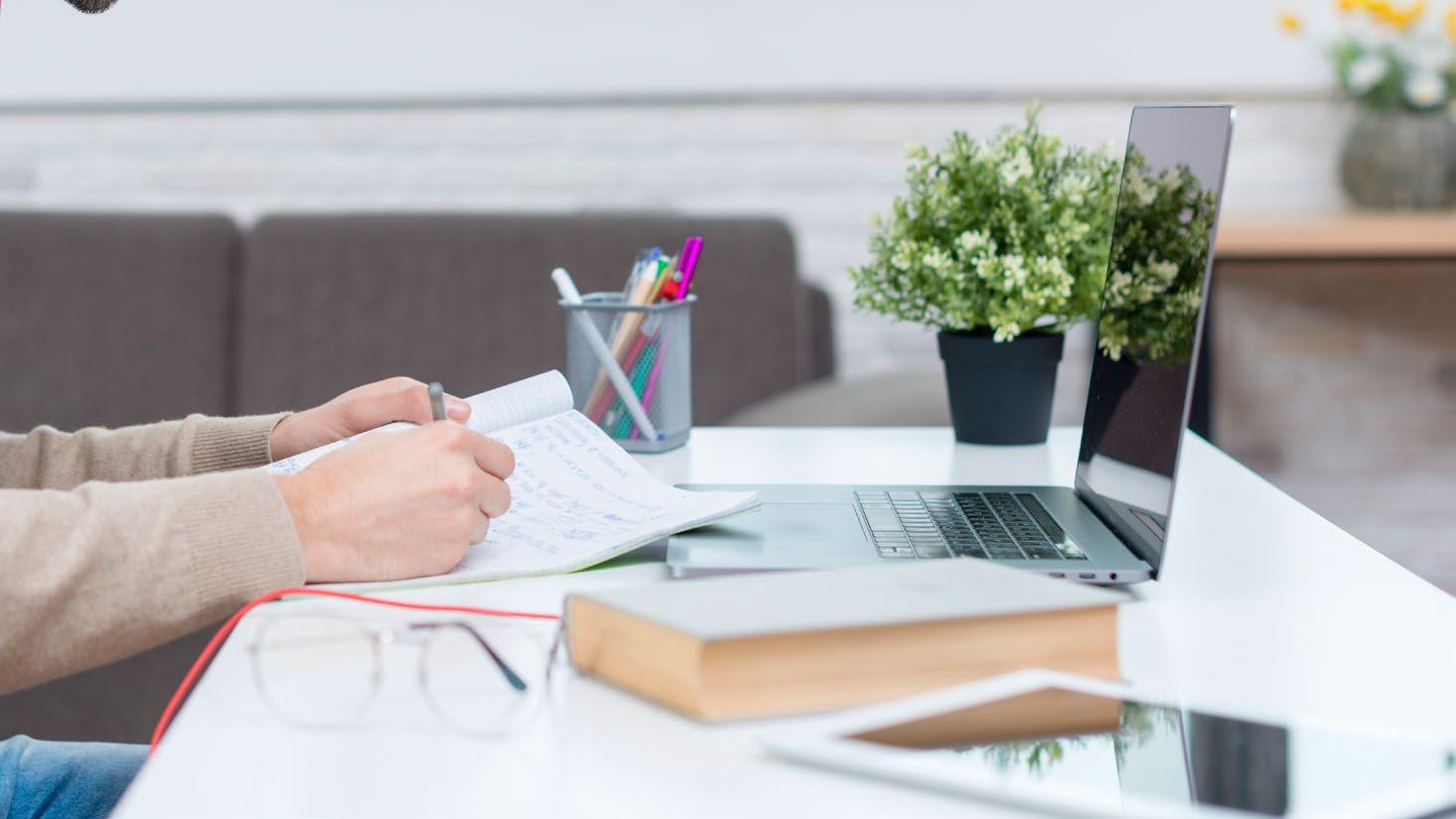
sometimes lead me to having to cancel my participation of a meeting at the last minute. This is another reason why recording all online gatherings for later viewing is vital. I can tell you, from personal experience, that there is no greater antidote to the guilt I feel when my struggles force me to cancel a meeting than the understanding, support and well wishes I receive from my fellow participants.
As we all continue to find our footing during this time of collective struggle, it is incumbent upon us to remember to continue to look out for one another after COVID passes. If it is two things this world lacks, it is compassion and understanding. Let’s make sure these times serve as a lasting reminder that we are all in this together, and that the key to a more fruitful and fulfilling future for us all comes down to one word: accommodation.
Russell Lehmann is an award-winning and internationally recognized motivational speaker, poet, author, and advocate for autism and mental health.
By Marisa Parker
Finding the silver lining in the coronavirus pandemic can be difficult. The constant flow of coronavirus news on social media platforms is the primary reason why discovering the silver lining in the crisis is difficult for me.
Posting to social media platforms and monitoring social media sites on a regular basis is a necessary part of my job. I find myself constantly checking social media sources for updates on the pandemic. Sometimes I feel that I am unable to find the silver lining in the pandemic due to the frequency of social media posts surrounding COVID-19 that are posted online and the fact the pandemic will not be ending anytime soon. In order to decrease the amount of time I spend on social media, I have set limits for myself on checking social media sources after work hours.
How can someone go about finding the silver lining in the pandemic? There are multiple ways in which people can decrease their time spent using screens and social media platforms while remaining positive. Chatting with friends on Zoom or FaceTime can be a

positive tool to remain connected with the outside world while engaging in the practice of social distancing . I also find that staying off of social media platforms after work hours reduces anxiety. Engaging in meaningful and fulfilling activities outside of work, such as going for walks outside, reading books, and listening to podcasts that you enjoy helps to reduce stress and anxiety. These activities can improve a person’s outlook on life and the current global situation we find ourselves in at the moment.
Marisa Parker is a Digital Coordinator at the Ruderman Family Foundation. In her role, she oversees social media content.
Uncertainty in the Age of COVID-19: On Education and Disability
By Kendra Muller Taylor
There has been much talk in higher education about the “unprecedented” and “uncertain” nature of our times. I am thrilled to see the compassionate measures put in place to combat the uncertainty of COVID-19, and the pandemic’s disproportionate effect on underrepresented students. There has been increased talk regarding accommodations, alternative grading measures, online resources, and other mitigation techniques to improve equity for students. I have also seen the extraordinary power of fellow students collaborating with decision-makers to advocate for new ways of improving educational equity.
This discussion of equity in education has been one of both fascination and frustration for the disability community. Some students who normally had to fight for accommodations have seen increased empathy. In other cases, however, normal procedure has been flipped on its head as schools struggle to find alternative means of providing accommodations in the pandemic. But students with disabilities have always been experts at meandering through “uncertain times” due to their resilience in handling non-compliant Americans with Disabilities Act (ADA) standards, accommodation denials, and health emergencies.
The lives of students with disabilities are uncertain. From the quickly changing health symptoms to societal biases encountered, these students are constantly adapting to uncertainty in the way they will be treated by schools, uncertainty about their health, and uncertainty in their future career prospects once out of school. I vividly remember when I received an emergency surgery in the middle of the semester. That time was “uncertain” and “unprecedented” as I did not know this surgery would be needed. I was stuck in my own personal quarantine inside a hospital room. I missed vital education for much of the rest of the semester. Now, I see that a video of class would have been an easy solution to what seemed an unavoidable obstacle, as many schools have now implemented.
In this period of international uncertainty, schools may be forced to reckon with their insularity of students’ current conditions. But when the pandemic crisis is over, students will continue to have personal crises — “one-person pandemics” that will turn their world upside down. I hope for a world where different methods of learning can be feasible for students in various situations. This time of tragedy has proved the ability of educators to achieve new heights of dignity and creativity in providing access to knowledge. It has also proven student resilience and ability to adapt. Access to education should be possible, and the pandemic has proven that efforts can be made to provide an education to all who desire it. This will be attainable as administrators take seriously the uncertainty of each student’s life.
Kendra Muller Taylor is a University of San Diego Law School student who is dedicated to presenting transparent research regarding unequal access in higher education for people with disabilities.
This Is New
By Sarah Horowitz
As a stereotypical overfunctioner, I react to stress as a bulldozer reacts to a pile of rubble — with a powerful push and an over-controlling temper. During a stressful crisis, my mind buzzes with steps that must be taken, checklists that have to be completed, phone calls that need to be made, and arrangements that must be finalized. I take full responsibility and shoulder every burden, all while running faster than my own problems can catch me. Mid-crisis, I am in control, hyper-focused, and piloted by that part of my brain that doesn’t have to feel, but just has to do.
This pattern of over-functioning feels adaptive, even motivating, during peak crisis when everything threatens to collapse. But, as the crisis passes its crescendo and the adrenalin rush subsides, there is a jarring switch that occurs as a new normal takes residence. The dizzying pace I was functioning at suddenly slows to a dull ache. The buzzing in my brain ceases its violent hum, leaving me with a lonely, cerebral echo. My adrenalin-soaked body, once functioning at peak performance, rapidly exhausts and slumps to the floor. I remember experiencing this switch after my grandmother died. From the 911 call to midway through the funeral, I over-functioned my way through the entire experience, taking on too much responsibility and too little self-care. But, as the funeral ended and everyone left in a trail of black, the adrenalin evaporated from my body and the air around me changed. The crisis was still there, but it had morphed into something heavier, thicker, and harder to shake. It was becoming a new normal, setting in roots and forcing my family to adapt to a future we were never ready for.
In literature, this emotional switch occurs when a community transitions from the “heroic” phase of crisis to the “disillusionment” phase of recovery. Directly after a crisis, adrenalin pumps in overdrive as the community bands together in a heroic effort to repair the damage. Once the “heroic” phase reaches its peak, the “honeymoon” phase begins and the community bonds over a shared catastrophic experience, resulting in reduced rates of mental health. But, once this period of optimism is over, the disillusionment phase ensues. [1] This phase is characterized by disappointment as our goals, needs, and expectations aren’t met, and we have to accept this emotional low as the current new normal. It is in this phase of crisis that rates of mental health conditions skyrocket.[2]
Accepting a new normal is one of the hardest things to do, and COVID-19 is a new normal that has shaken our entire globe to the core. In a mad dash to slow the spread and flatten the curve, a new normal was set in motion on a global scale that changed the very foundation in which we operate. Initiatives were formed and executed, laws were written and decreed, and the world watched as the adrenalin-fueled peak of COVID-19 settled into the deep valley of normalcy. And as we sink into the disillusionment phase, we all realize – this virus is not a quick fix, but rather a long haul, and with that comes the desperate attempt to adapt to a world that seemed to change overnight.
And change is hard. Whichever way you look at it. We have all needed to change our daily lives in the mists of this virus, in small and big ways, and as humans we are resistant to change. Change is uncomfortable, scary, uncharted and unpredictable, and especially in an unprecedented crisis like COVID-19, many of us are left floundering. We find ourselves obsessing over the health and safety of our bodies, taking measures to reduce contact and spread, but as we focus more on our physical health and that of others, we seem to put our mental health on the back burner.
It feels like the cruelest of ironies that the more thoughtful we are with our physical health during this time, the more thoughtless
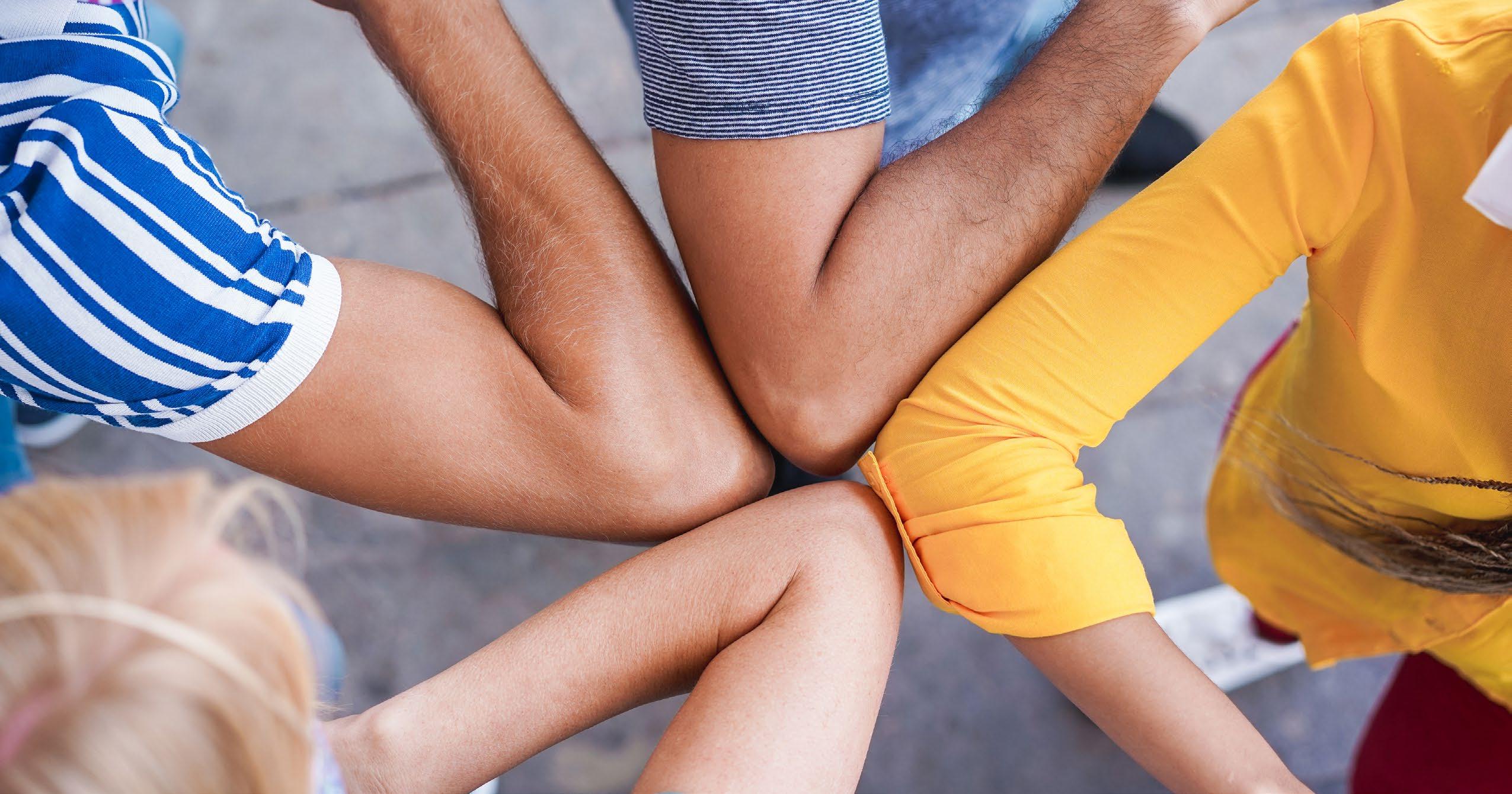
we are with our mental health. As we shelter in place to reduce contraction and spread, we disconnect ourselves from the healing benefits of nature and outdoor activity. As we decrease interaction with others and increase social isolation, we lose the healthful properties of social connection and physical touch. This push-and-pull dynamic has changed the way we interact with others, as well as the way we interact with ourselves, in both good and bad ways. As a self-proclaimed introvert, I find myself uncovering healthy habits I had forgotten in the chaos of my pre-coronavirus life, but also falling into the lightly concealed trap of excess isolation. As an endorphin addict who copes with stress through exercise, I find both joy in having time to be active but also guilt for being outside of my home. As a critical hyper-productive, working and studying from home has given me more time to learn, but also less structure to stay motivated. The effect COVID-19 has had on mental health differs from person to person, but there are general trends that have been noted from previous crises that may provide us with some insight.
History has shown us what kind of impact global crises can have on our mental health. Increased rates of PTS, acute anxiety, and prolonged depression were noted in China following the SARS outbreak in 2003, and similar trends were seen in the aftermath of the West Africa Ebola
epidemic, resulting in increased trauma-related disorders such as PTSD and anxiety-depression. [3] And while the coronavirus is considered a biological disaster, studies have begun to equate its psychological effects to those resulting from natural disasters, such as tsunamis and hurricanes. [4] We have seen increased alcoholism following the Japan triple disaster in 2011[5], heightened sleep disturbances after the Wenchuan earthquake in 2008,[6] higher incidence of PTSD and depression resulting from the September 11 attacks[7] — and this just scratches the surface. Other catastrophic events such as job loss, foreclosures, bereavement, and burnout also result in increased rates of depression and anxiety. On top of all this, I am left thinking about the increased rates of domestic violence, the amplification of eating disorders, the resurfacing of OCD tendencies, and the relapse of substance abuse during this time. In many ways, coronavirus seemed to culminate into the perfect storm. The entire world was thrown into an unprecedented crisis and asked to adapt in a matter of weeks, without the usual social support or structured routine we were used to. It’s like flying without a net.
A couple of weeks ago, I found myself crying. In all honestly, it was a moment that caught me off guard. I was on a late-night walk in my neighborhood, mask on and earphones in, walking down familiar concrete and hoping not to run into anyone within a six-foot radius. And then, in one overwhelming wave of emotion,
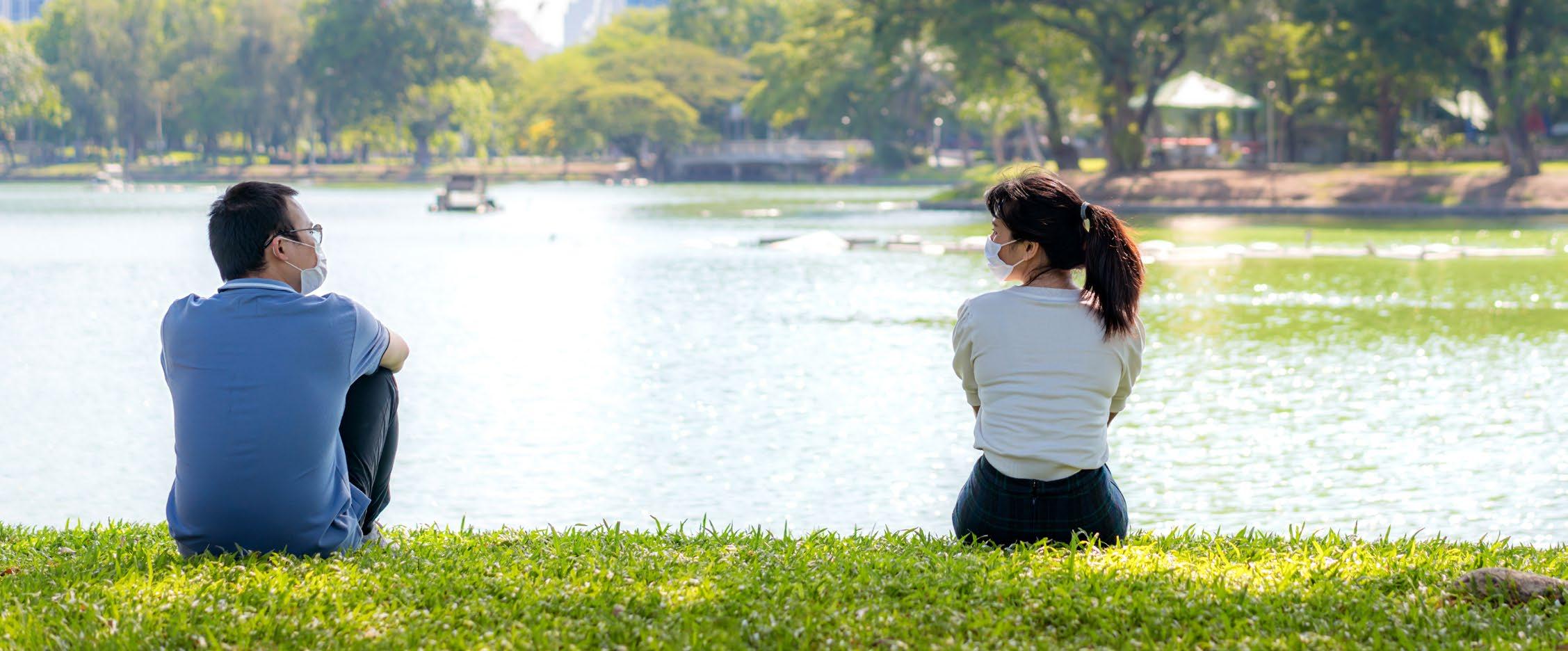
I started crying. That was the moment I knew my adrenalin rush had finally been depleted. As I let my brain accept the new normal around me, everything came flooding in at once — my anxiety about at-risk family, my frustration at under productivity, my shame centered around pervasive insufficiency, my depression stemming from lack of connection, and the collective grief we all feel for a past normal that will never return. Whether it is grief for the loss of a loved one or grief for the loss of a job, I believe we are all grieving the death of a past normal. And in that grief, I believe we can also find unity.
In a very literal sense, we are all experiencing this together. Together, we blindly grapple through this new normal, hoping
to find solid ground on an everchanging foundation, trying a bunch of things and having most of them not work. I’ve tried bread baking (so much harder than it should be), candle making (why do I think I’m a professional?), meditation (stop telling me to open a metaphorical door to my potential), and a slew of other hobbies that I hoped would give me purpose and structure. While most, if not all, of these attempts failed, I found other people who were trying, just like I am, to acclimate to a new normal. And in this unity, we also share the same foundational struggle — we have all never done this before. We have all never suffered through a pandemic of this scale. We have all never lived through one of the worst economic spirals of the century. We have all never experienced this quality of terror on a global level. We have all never seen so many lives taken, so many businesses foreclosed, so many hugs missed, so many gatherings celebrated alone. Acknowledging the novelty of the situation feels like the first step to healing. This is a new normal we have never tried to navigate before, so this is going to really suck while we try and figure this out. This is going to be hard. But, as we try and cope with this new normal, it’s okay to fail. It’s okay to get frustrated at your lack of productivity, lonely from your dearth of socialization, lost because of your lack of structure — it’s okay to feel these things because this situation is new, and those feelings toward novelty are part of the human experience.
The important thing to me is that I try to learn and try to adapt. I started a new hobby, finally mastered Zoom calls, reveled in my solitude, and practiced calm. I try to nourish my body and my brain, set new routines for myself, stay active, and at times, sit with my discomfort and accept its existence in my life. And I am working on practicing empathy toward myself, and empathy toward others. I am trying to stop comparing suffering and give myself more room to love and breath. Because in the end, we are all struggling through this new normal together. This is my first time dealing with a pandemic.
This is new.
[1] Phases of Disaster | SAMHSA. (n.d.). Retrieved May 28, 2020, from https://www.samhsa.gov/dtac/recoveringdisasters/phases-disaster [2] Arnberg, F. K., Gudmundsdóttir, R., Butwicka, A., Fang, F., Lichtenstein, P., Hultman, C. M., & Valdimarsdóttir, U. A. (2015). Psychiatric disorders and suicide attempts in Swedish survivors of the 2004 southeast Asia tsunami: a 5 year matched cohort study. The lancet. Psychiatry, 2(9), 817–824. https://doi.org/10.1016/S2215-0366(15)00124-8 [3] Jalloh, M. F., Li, W., Bunnell, R. E., Ethier, K. A., O’Leary, A., Hageman, K. M., Sengeh, P., Jalloh, M. B., Morgan, O., Hersey, S., Marston, B. J., Dafae, F., & Redd, J. T. (2018). Impact of Ebola experiences and risk perceptions on mental health in Sierra Leone, July 2015. BMJ global health, 3(2), e000471. https://doi.org/10.1136/ bmjgh-2017-000471 [4] Morganstein, J. C., & Ursano, R. J. (2020). Ecological Disasters and Mental Health: Causes, Consequences, and Interventions. Frontiers in psychiatry, 11, 1. https://doi. org/10.3389/fpsyt.2020.00001 [5] Orui, M., Ueda, Y., Suzuki, Y., Maeda, M., Ohira, T., Yabe, H., & Yasumura, S. (2017). The Relationship between Starting to Drink and Psychological Distress, Sleep Disturbance after the Great East Japan Earthquake and Nuclear Disaster: The Fukushima Health Management Survey. International journal of environmental research and public health, 14(10), 1281. https://doi.org/10.3390/ ijerph14101281 [6] Mellman, T. A., David, D., Kulick-Bell, R., Hebding, J., & Nolan, B. (1995). Sleep disturbance and its relationship to psychiatric morbidity after Hurricane Andrew. The American journal of psychiatry. [7] Galea, S., Ahern, J., Resnick, H., Kilpatrick, D., Bucuvalas, M., Gold, J., & Vlahov, D. (2002). Psychological sequelae of the September 11 terrorist attacks in New York City. The New England journal of medicine, 346(13), 982–987. https://doi.org/10.1056/NEJMsa013404
Sarah Horowitz is a mental health advocate who speaks, writes and researches about mental health to reduce stigma and increase public awareness.
Leveling the Playing Field
By Rania Abi Rafeh
On a regular day before the pandemic, walking the streets of New York City with my physical disability felt like a high-stakes video game.
My right foot took the lead with a swift crooked step forward while my left leg scraped the pavement behind to catch up. Step, beat, step, beat, step. My eyes darted from the noise of my shoes to the faces blurring past me. I could feel a slight breeze on my skin from each body skimming past me while hearing the plomp, plomp, plomp of feet behind me, so my right leg took bigger steps making my knee jut out even more to get ahead. In turn, my brown hair bounced around my face as my arched back puffed out my chest like a sail, while my hips turned in, causing my knees to want to kiss. I continued to dodge passersby as though I were Mario eluding a walking mushroom.
COVID-19 has created an environment where everyone is at a disadvantage, not just the disability community. Only after seeing how the entire world has been impaired by a pandemic am I able to feel as though I am on the same playing field as an able-bodied person.
The city’s foot traffic during the pandemic is sparse to nonexistent, depending on the area. Seeing the bare streets was jarring at first — I wouldn’t have been surprised to see tumbleweed rolling out of nowhere — but I came to appreciate the quietness. I usually try to match the pace of people walking in all directions, but the pandemic allows me to walk the streets at my own pace. In turn, I enjoy the walks I take. For once, my feet don’t feel as rushed, and my shoulders are not pointy with tension — a refreshing feeling to have when moving one’s body takes significant effort.
Having to quarantine and stay indoors has taken the pressure off of traveling in the city — an overwhelming task to do if you have a physical disability. The New York Times reports that New York City’s subways are insufficiently accessible: “Only
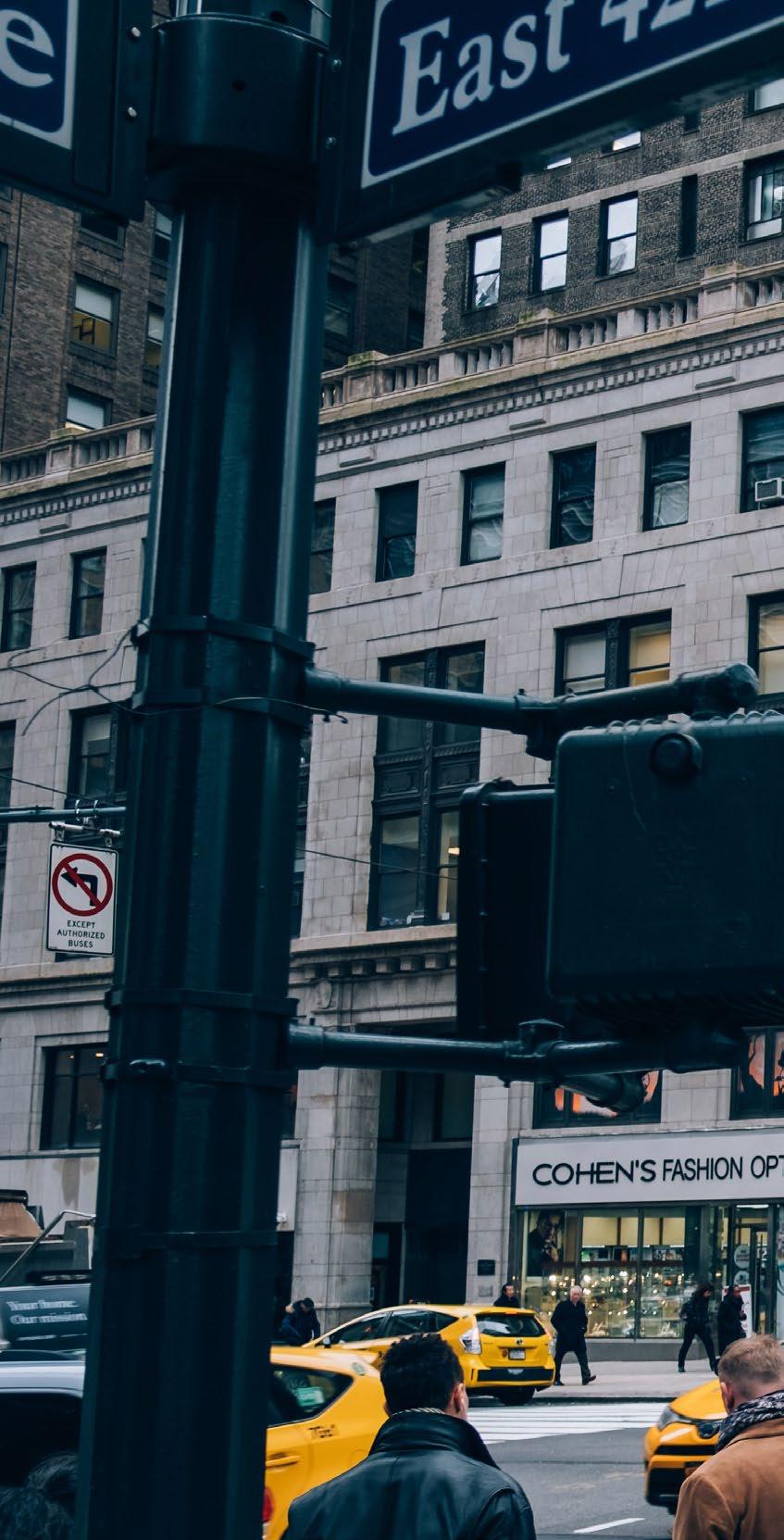
about a quarter of 472 stations in the city have elevators — one of the lowest percentages of any major transit.” If I were counting on using the MTA’s other service, Access-A-Ride, I’d constantly be waiting, my schedule isn’t built around that of the car service. Zoom makes it easier for me to meet up with others, allowing me to be there without physically being present. Though I recognize that these circumstances are not realistically permanent, the transportation options available to me and the rest of the disability
community in a COVID-free world are similarly impractical.
I have found a silver lining in the pandemic with regard to my walking disability. However, this shift in the playing field reminds me of society’s long-standing disregard of the disability community’s right to access. For years, people with disabilities have missed out on specific
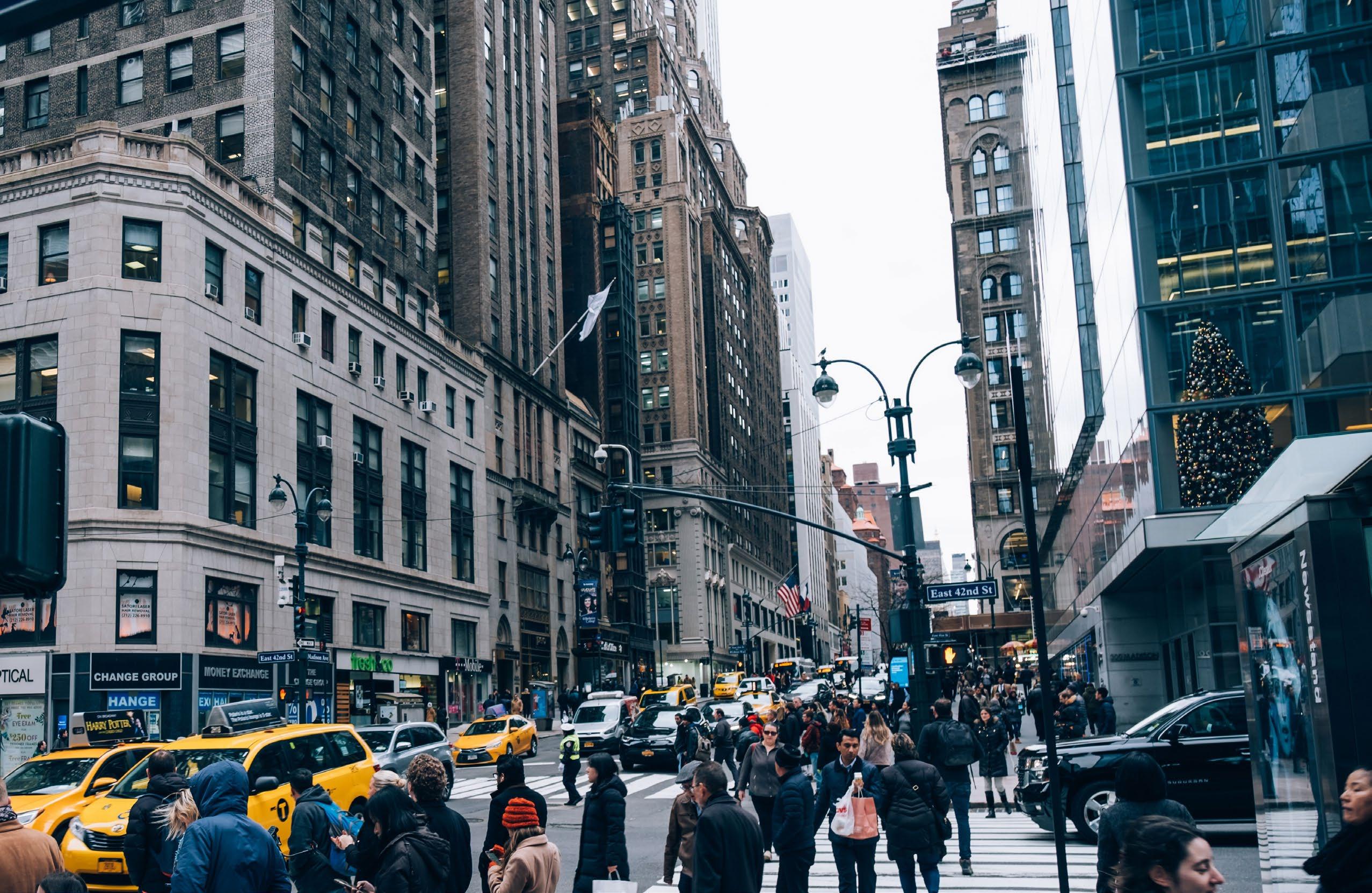
aspects of living due to inadequate accessibility. Only with society’s current embrace of virtual life have the tables turned. People with disabilities are now able to effectively participate in work and socialize from their own homes. While able-bodied people are upset about reduced mobility or the challenges of working remotely, many people with disabilities already faced these obstacles on a daily basis. The very fact that an individual with a physical disability, such as myself, can achieve an accessible lifestyle because of the pandemic exposes the reality that our current society is not designed with minority groups in mind. Yet, by calling out the limitations that seek to negate our existence, we can start to fix the inequality society has created.
Rania Abi Rafeh is a freelance writer based in Manhattan, NY. Rania is dedicated to writing about diversity and inclusion in the realm of disabilities, sexuality, mental health, and media.
Our New Normal
By Selma Sulejman
As I sit down and begin to compose this short piece, I realize how difficult it has become to formulate and thereby understand what the phrase “our new normal” means for so many people around the globe. This pandemic has impacted various facets of life, and how we navigate on a daily basis. What did society deem normal before COVID-19?
One can only imply that the greater population did not have to take significant precautions before going out for a simple walk, picking up groceries at the market, maintaining specific amount of distance while trying to complete essential tasks, catching a train to work that will demonstrate indifferences, grabbing a flight to see a loved one who may be ill and not knowing if the aviation service has been disrupted, and pondering about how rent, as well as tuition deadlines, will be met.
Now, this leaves you thinking, are these the only substantial factors that presented a sense of normalcy prior to this universal outbreak? Absolutely not. There are countless elements that must be counted for such as how we went about obtaining a general doctor visit, being able to retain necessary medical supply without any financial and or systematic hardship, and moreover this vital asset of employment that allows us to live healthy as well as equitable lives.
Fast forward to the current crises we are all experiencing on an individual, yet collective manner. Do we have the capability to identify what the mere meaning and or feeling of normal is at this given time? From my personal point of view, I can only attest that attending virtual activities, watching Netflix and or Disney plus with the nephew, reading both for pleasure and academia, spending a long time with the family, and praying and hoping for a positive shift in the days to come is what my new normal looks like right now.
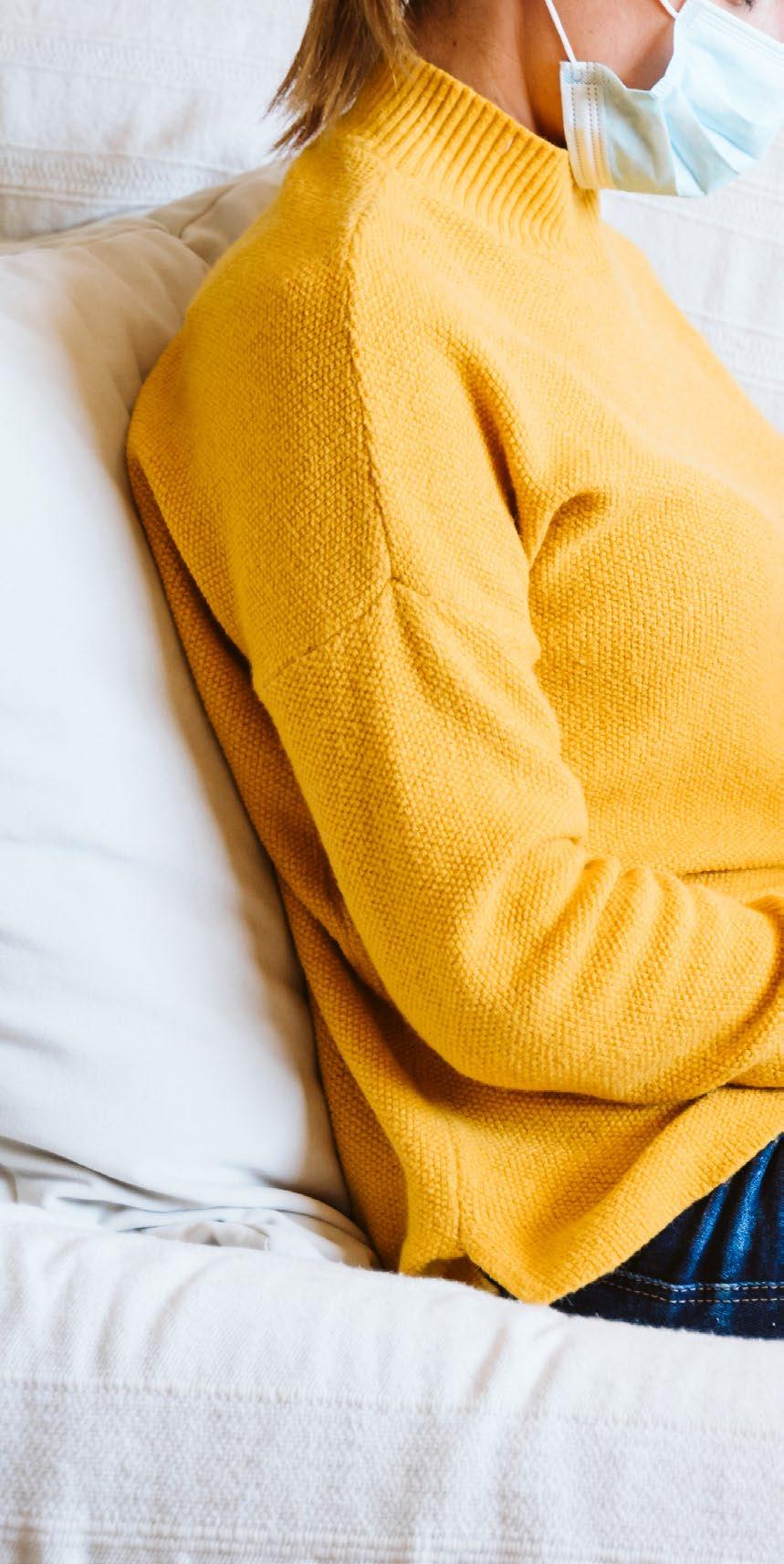
“Our new normal” has demonstrated hurt, loss, uncertainties, strength, humanitykindness, adaptation, challenges, and this influence of willpower to move ahead with so many unknown contributing variables that will surely shape our social and economic interactions in the near future. Additionally, both educators and parents have illustrated leadership as well as support in the homeschooling process that a vast number of students had to embark on given such a short amount of time to adjust.
On the same token, there are not enough words to express the gratitude towards all of the doctors, nurses, and every other healthcare worker that is out on the frontlines putting their best foot forward. As this pandemic seems to be diverging in ranging paths that being geographically and medically, we have to understand where we stand with
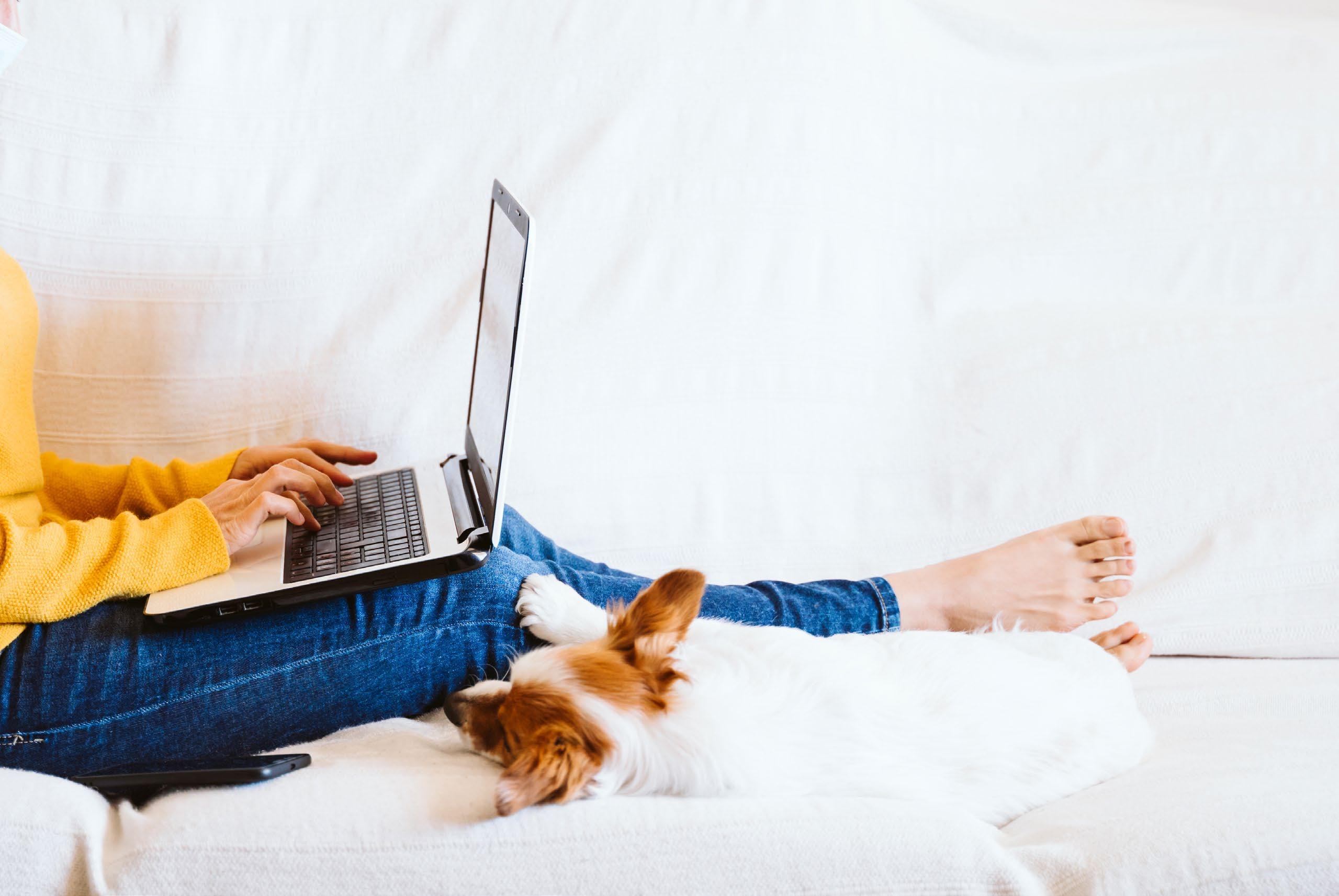
“our new normal.” Whether that means working from home, preparing social engagements through a virtual platform, cooking up a storm with your kids, cleaning, teaming up with likeminded people and developing assistive gear that is in high demand, and most importantly showing love and respect for one another. ;Emotions are diverse with so much occurring, so everyone is entitled to cry, vent, laugh, practice mindfulness, exercise, and other reflective methods that they may find helpful. I’m sending everyone hugs, positivity, hope, and love.
Selma Sulejman is a recent graduate of The CUNY School of Professional Studies. She advocates for people with disabilities, women, and other social justice topics.
Navigating the COVID-19 Pandemic with a Disability
By Kendra Gottsleben
In the past, I have often wondered if I would be able to successfully work at a job remotely. Would I be able to create productive routines enabling me to get my work done or would it be too distracting working from home? Being that I am very social with my coworkers I was leery that I wouldn’t be able to continue these relationships. Once COVID-19 was detected in South Dakota in the middle of March, my anxiety began to increase. I had heard about the impacts of COVID-19 in the media, and I knew it was only a matter of time that it would reach South Dakota. This was concerning for me as I was diagnosed with the rare disease Mucopolysaccharidosis Type VI (MPS VI) at the age of four years old. This condition affects my heart, lungs, eyes, and other vital organs and makes my body more susceptible to illnesses, especially COVID-19. In the wake of the pandemic I knew there was a chance I would be able to see just how successful I could be with working remotely.
My coworkers and I were eventually forced to work remotely; fortunately, we settled into this arrangement, and I felt immense gratitude towards my boss. Even before our university told all staff and faculty to begin working from home, he came to me and said he wanted me safe and to start working from home. This may seem not like a big deal to some, but for me it is. Having a boss that is aware enough to know their employees’ best interest for their health is something to aspire to. His leadership has been so reassuring for me. I feel incredibly blessed to have him as my current boss, especially trying to navigate uncharted territory during a pandemic. Leadership can make or break an organization, and he has it down. With him at the helm I haven’t had to stress about my job during COVID-19 like so many others in society have.
Dealing with the emotions surrounding the possibility of contracting COVID-19 can be another stressor. I have been dealing with them by saying prayers and staying connected with others who are in the rare disease and disability space. This can range from sharing how important it is for everyone to wear masks, social distance and stay home if one feels sick. This is not just vital for people with rare diseases and disabilities or the elderly, it is essential for all of humanity. I am trying to also not become so fearful that it inhibits me from staying positive for myself and others. I do not want to lose myself and my outlook on life because of the pandemic, but I am realistic and know that if I were to come down with COVID-19 I would most likely die.
In recent days, I have found myself a little disheartened as I have seen people starting to gather in large groups once again as if there is not still a pandemic occurring in our world. I totally understand wanting to be having fun with friends and family at typical summer activities and events, but those are danger zones in my opinion. So, I have chosen to reduce my chances in contracting COVID-19 by not participating in such danger zones. I realize it is up to me and me alone to keep myself safe, so I remain at home. This weighs even more heavily on me now as I prepare for a heart surgery. Undergoing such a procedure during a pandemic isn’t my ideal choice. A heart surgery alone has
its risks, and adding COVID-19 doesn’t help any, but the operation must be done.
It can be challenging when I hear people say, “Oh yea I forgot about the whole COVID thing still going on!” “We all just need to get it and move on!” and “COVID is totally made up!” There is no guarantee that any of us, no matter our age, race, ethnicity or gender will be able to survive the illness. As I sit at home, those comments sometimes cut through me like a slap in the face. However, I understand that others have the right to their opinion, and I would never deny them that right. So, I am focusing on seeing positives that could possibly come out of the pandemic.
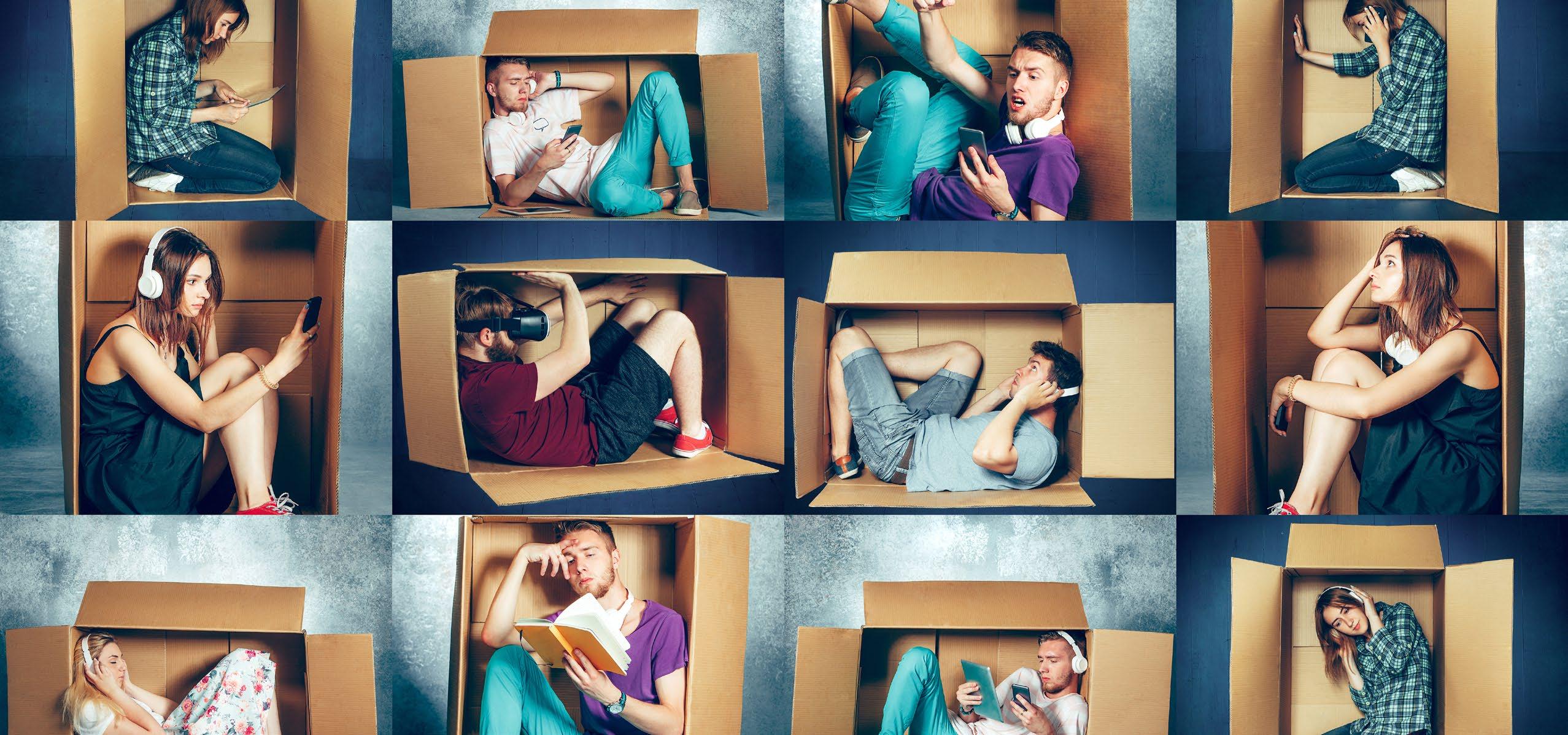
When I look towards the future, I like to be optimistic and see this pandemic possibly shifting our society in ways that perhaps benefit the rare disease and disability community. For example, many of us are or had been working from home, so businesses and organizations are seeing or saw how it is conceivable to have remote employees. This could allow for additional people with rare diseases or disabilities to become employed. Businesses and organizations were forced to adapt for all of their employees, and hopefully they will continue the creativity when considering new applicants. Also, I hope the delivery or curbside options that were implemented by stores and restaurants will continue well after the pandemic. Such expansions help all of society currently, but they are especially beneficial for people who are unable to drive or lack access to reliable transportation. Likewise, I am hopeful we, as a human race, can become more kind and giving — taking time to actually talk and listen to one another when we walk or roll by.
I believe we will come out of this stronger. Well, that is my hope anyway.
Kendra Gottsleben is a Marketing Communication Specialist, author, and spokesperson on living a life with a rare disease and disability.

